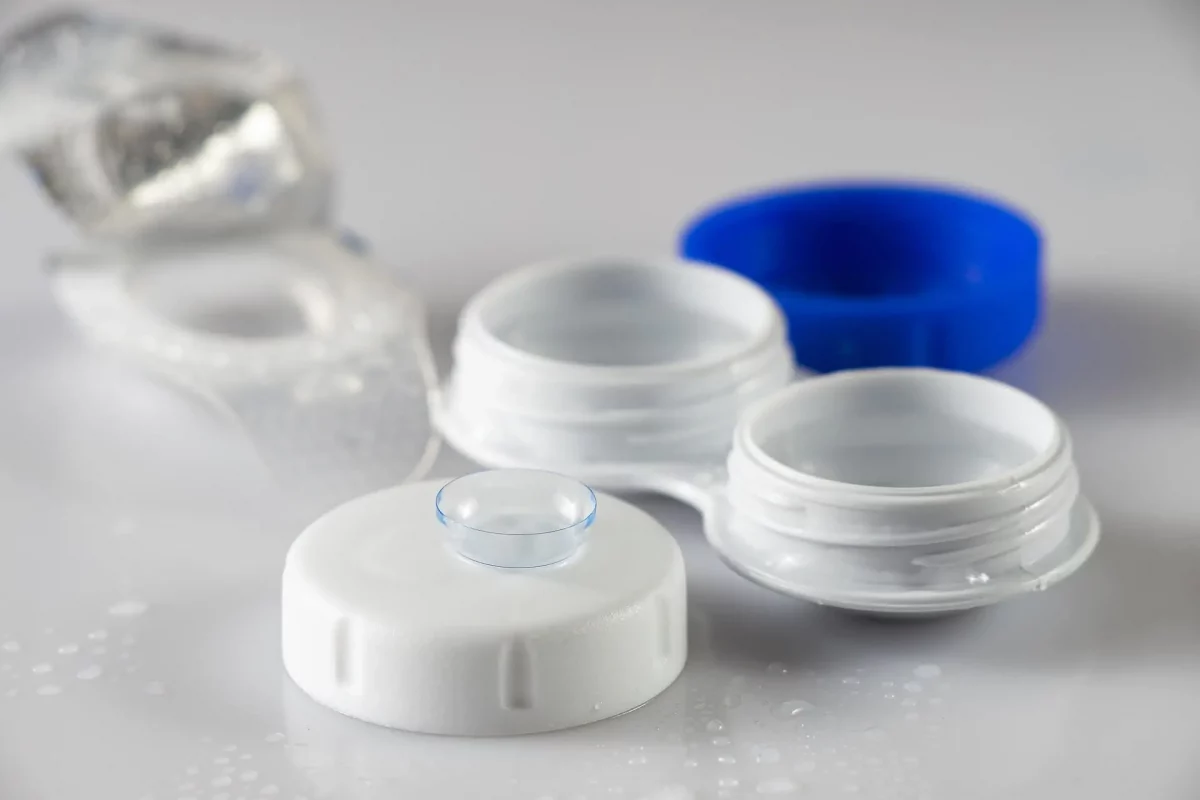Blog
The Road to Popularity of Colored Contact Lenses
Industry Research.
The Road to Popularity of Colored Contact Lenses
Compared to traditional frames glasses, contact lenses are more and more popular, increasingly sought after by consumers for their aesthetics and convenience, especially as colored contact lenses have broadened the variety, colors, and patterns of their products.
The contact lens market has become a “blue ocean” that takes into account a large number of myopic people and beauty users.
The contact lens (CL), which is directly attached to the tear layer of the cornea, is physiologically compatible with the human eye for vision correction – this is what we often call contact lenses.
Most people use the term “contacts” to refer to all cosmetic contact lens lenses, but this is a misconception.
Technically speaking, contacts are a trademark of Johnson & Johnson (which helps people with eye injuries cover up eye imperfections) and are the company’s brand of cosmetic contact lenses designed for the Asian market under the English trademark 1-DAY ACUVUE® DEFINE®.
Johnson & Johnson is also the first company in the world to produce contact lenses with cosmetic effects using sandwich technology (Comfort Oxygen Sandwich).
Color contact lenses are generally divided into three layers, with two clear corneal contact lenses sandwiching a professional pigment coating in between, like a “sandwich.
Nowadays, the term “contacts” is often used to refer to the entire category of colored contact lenses.
According to research by Gosun Securities, the global ophthalmic pharmaceutical market will grow from $24.7 billion in 2015 to $33.7 billion in 2019, at a growth rate of 8.0% CAGR.
According to Alcon, Inc., an ophthalmic medical company, the global market for ophthalmic medical devices and vision care products reached $23 billion in 2017 and is expected to grow at a CAGR of 4% from 2018 to 2023, with the vision care market size of about $14 billion in 2017 and the market size of contact lenses
The market size of contact lenses is about $8 billion, accounting for 57%.
If the ophthalmic drug market size and ophthalmic medical devices and vision care products market size are superimposed on the overall ophthalmic market size, the global ophthalmic market size in 2019 is about $58.6 billion (excluding ophthalmic
medical care).
In exploring the evolution of the contact lens market, we can dismantle the contact lens (including colored contact lenses) end market from an investment perspective in two dimensions, vertical and horizontal.
From the vertical dimension, the contact lens end market is divided into 3 stages: Consumerization, FMCG, and Beauty Cosmetics.
From medical supplies to consumer products
In the U.S., it takes a rather complicated series of procedures to get a suitable pair of contact lenses.
Because of this, a large number of posts have appeared on the Internet in recent years looking forward to simpler and more convenient contact lenses, and some e-commerce platforms try to leapfrog the inspection steps and make it less laborious for consumers to buy contact lenses. For example, wholesalers and consumers can purchase contact lenses directly from our website.
From consumerization to FMCG
Contact lenses can be divided into daily, bi-weekly, monthly, seasonal, semi-annual, and annual wear.
The consumer can purchase contact lenses through regular channels based on their understanding of their eye condition and related data, and leave behind the tedious on-site examination by optometrists, short-term trial wear, and long-term determination.
The trend of contact lenses (including colored contact lenses) from medical supplies to consumer products in the end market is taking shape.
From FMCG to beauty and cosmetic
In my opinion, an important reason for the explosion of the colored contact lens category is related to the penetration and expansion of beauty and cosmetics in the global market.
Over the past five years, the penetration of beauty has grown from around 20% in 2016 to nearly 50% by 2020.
As facial grooming becomes a daily routine for women, especially young post-95 and post-00 girls, it is not hard to imagine that colored contact lenses are also seen as part of the overall makeup look.
In other words, color users are becoming accustomed to combining clothing, hair accessories, and overall makeup to pick complimentary.
In other words, color contact lens users are becoming accustomed to choosing color contact lenses that complement their clothing, hair accessories, and overall makeup, i.e. the color contact lens category is moving from FMCG to beauty.
There is no doubt that this will further increase the penetration and growth potential of the colored contact lens category, creating a huge market opportunity.
We tend to believe that colored contact lenses, which are both aesthetically pleasing and irreplaceable in terms of functionality, will become the category of choice for the next generation of mainstream young consumers.

